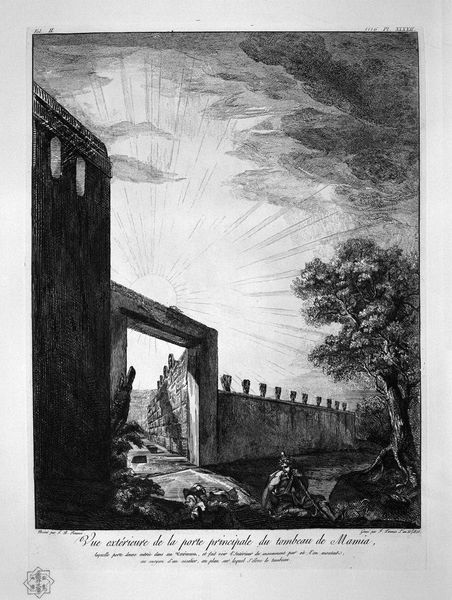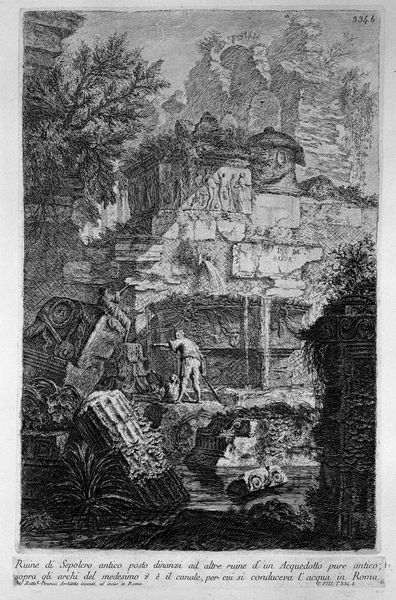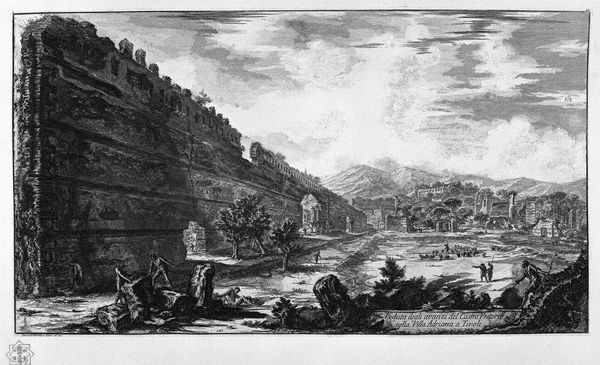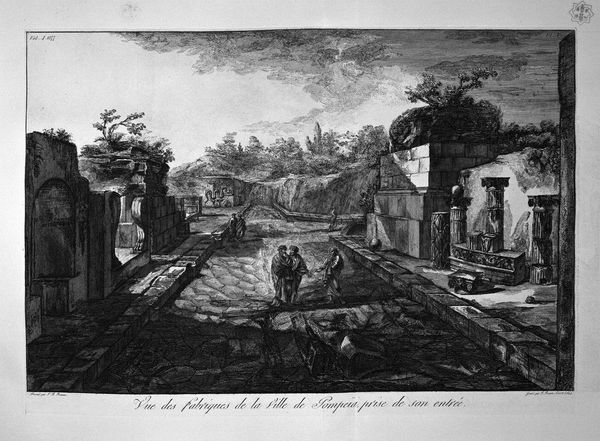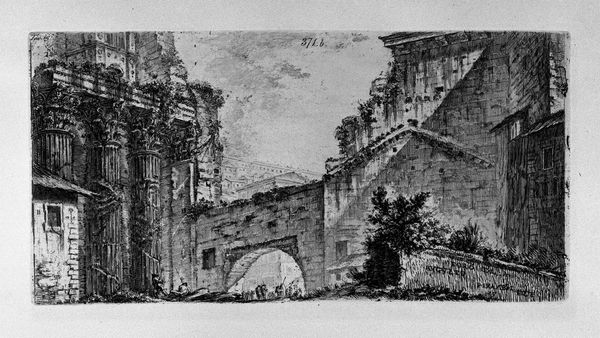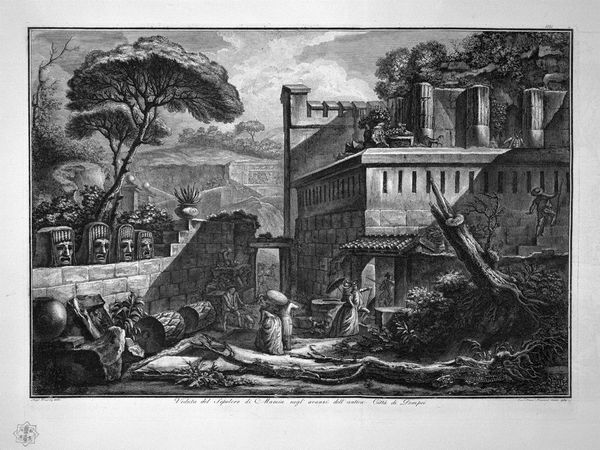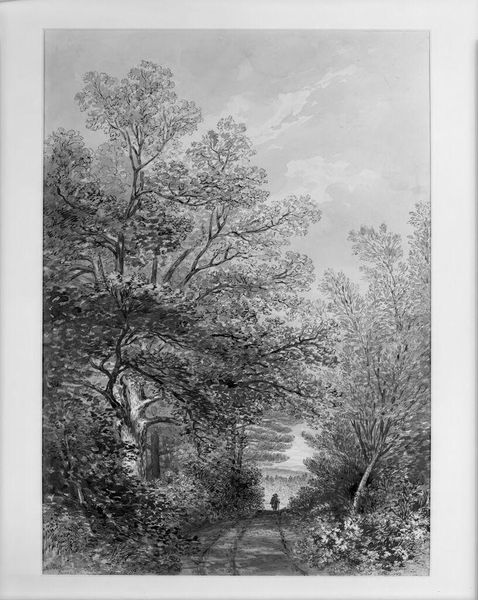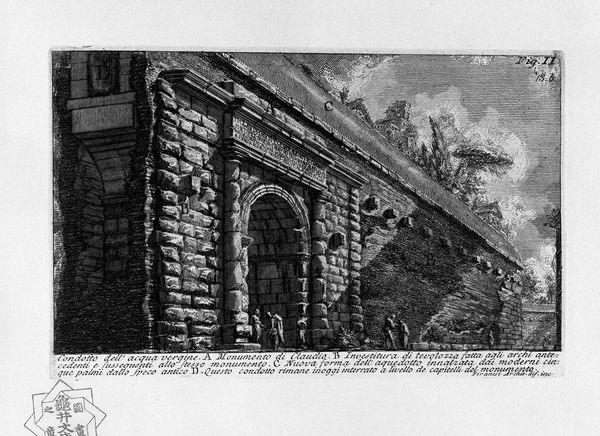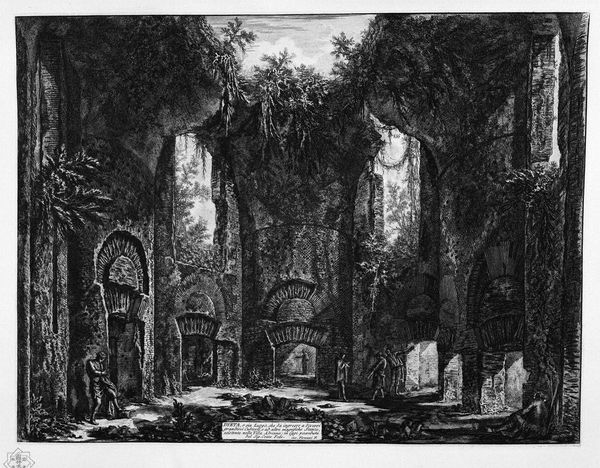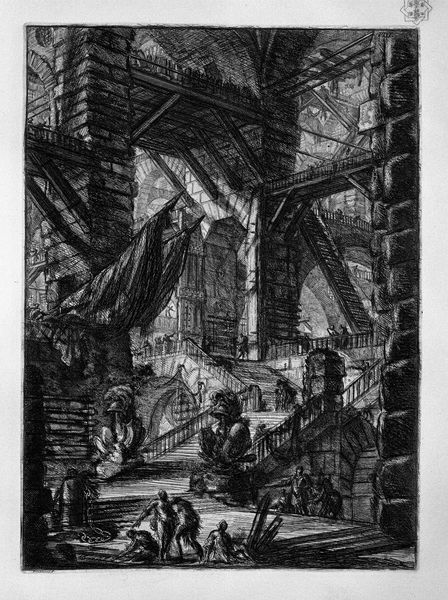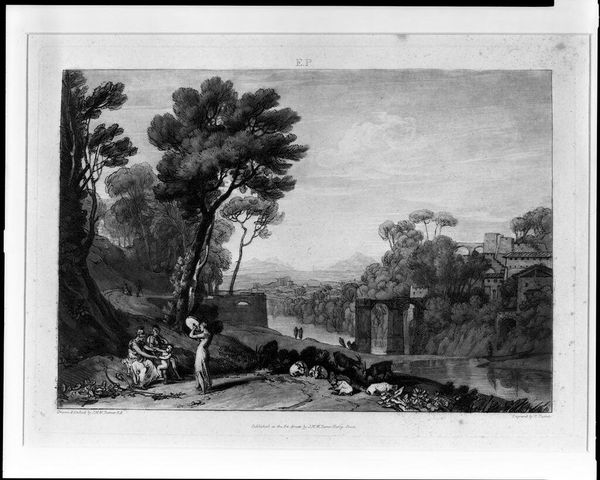
print, engraving, architecture
#
tree
#
neoclacissism
# print
#
landscape
#
history-painting
#
engraving
#
architecture
Copyright: Public domain
Curator: So, here we have Giovanni Battista Piranesi's engraving, "External view of the front door of the tomb aforesaid." It's a striking image. Editor: Yes, it is! The stark contrast and the looming architecture give it such a somber mood. What do you see in this piece, particularly in how it relates to Piranesi’s other works or the artistic trends of the time? Curator: Piranesi was deeply engaged in the power dynamics embedded in ancient Roman architecture. The imposing scale isn't just about documentation; it's a statement about the enduring legacy – and, perhaps, the oppressive weight – of empire. Note how the natural world, seemingly encroaching, is juxtaposed against severe geometry. Does this suggest something about how nature reclaims, or how these power structures can begin to erode? Editor: That's a fascinating point about the tension between nature and architecture. The grotesque masks emerging from the wall definitely add a layer of anxiety and social critique. Are those masks actually there, or imagined by the artist? Curator: The line between accurate representation and subjective interpretation is always blurred, particularly in Piranesi. Consider the broader 18th-century context. There was a surge of interest in the "sublime," this blending of terror and awe. Think of it in the context of colonial projects where "discovery" also justified control, that dynamic shapes the lens through which they see and represent it. What do you think this does to our reading of the work? Editor: I guess it forces you to acknowledge the colonial gaze inherent in these representations of history. The "sublime" becomes a justification. Curator: Exactly. It makes us consider whose perspective is privileged and whose is marginalized, even in an architectural print. It reminds us that the act of seeing and documenting is never neutral. Editor: I'll definitely be considering Piranesi’s works through this lens going forward! Curator: That is a valuable perspective to keep with us as we move forward! Thank you for sharing that insight.
Comments
No comments
Be the first to comment and join the conversation on the ultimate creative platform.
